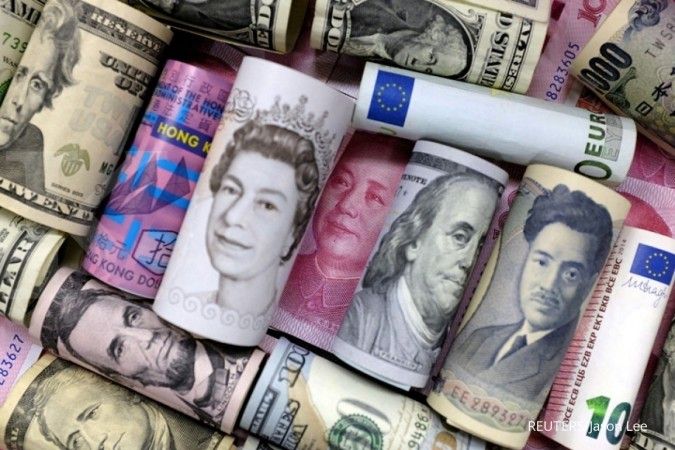KONTAN.CO.ID - NEW YORK, March 11 (Reuters) - The yen drifted higher against the U.S. dollar for a fourth straight session on Monday, bolstered by an upward revision to Japan's growth figures and expectations the Bank of Japan could exit negative rates at its policy meeting next week. In cryptocurrencies, bitcoin soared to a fresh record high above $72,000 underpinned by a surge in inflows into new spot exchange-traded funds for the digital asset. Hopes that the Federal Reserve will soon cut interest rates have also lifted bitcoin, which was last up 5.3% at $72,033 BTC=. The market though remains focused on the yen and BOJ.
In afternoon trading, the dollar was at 146.94 yen JPY=EBS, down 0.1% on the day. A growing number of BOJ policymakers are warming to the idea of ending negative rates at their March 18-19 meeting, sources told Reuters, amid expectations for hefty pay rises from Japan's biggest firms. Results of this year's annual "shunto" wage negotiations are due on Wednesday.
Baca Juga: Recommendations for PGAS Shares with Limited Projected Performance Growth At the same time, an upward revision to Japan's economic growth last quarter meant the country avoided a technical recession, adding to the argument the economy could weather tighter policy. "We have gone from focusing on the April meeting for the BOJ to make a rate move to March. But I prefer a policy move in April right now," said Amo Sahota, executive director at FX consulting firm Klarity FX in San Francisco. "They have been slow to act all this time, so what's the hurry now all of a sudden. We had the GDP revision but there's nothing there that says Japan is about to go explosive in growth and prices that they need to come in really hard right now. I think they have little more capacity to wait." The dollar index =USD rose 0.2% to 102.85, not far from the nearly two-month low of 102.33 reached on Friday when monthly payrolls figures signalled a cooling U.S. labor market, keeping the Fed on track to ease policy this year. The data did show downward revisions to January's blowout number. "(Fed Chair Jerome) Powell has said time and time again that the Fed has been looking for softening in the labor market, and it appears Friday's release - though on the surface quite hot - might have shown the cracks necessary to move the needle earlier," said Helen Given, FX trader, at Monex USA in Washington.
Baca Juga: Argentina Launches $65 Billion Bond Swap to Push Back 2024 Debt Traders currently see June as most likely for the first cut, bets that could be moved by important consumer price index inflation data on Tuesday. The euro EUR=EBS slipped 0.1% to $1.0924 after jumping as high as $1.0980 on Friday for the first time since Jan. 12. The European Central Bank left rates at record highs last Thursday while cautiously laying the ground to lower them later this year. Sterling GBP=EBS dropped 1.1% against the dollar to $1.2807, after pushing to the highest since late July at $1.2890 on Friday amid bets the Bank of England will be slower to cut rates than the Fed or ECB. The British currency faces a test on Tuesday with the release of jobs and wage data. Investors will be focused on Tuesday's consumer prices index (CPI) report, with the market forecasting headline CPI for February to rise 0.4%, from 0.3% in January, according to a Reuters poll. Core CPI, on the other hand, is seen at 0.3%, down from 0.4% in January. The year-on-year core CPI, however, is expected to have slipped to 3.7% in February, from 3.9% in the previous month. "When you look at CPI, you're really thinking about (Fed Chair Jerome) Powell's comments that they just need a little more evidence," said Klarity FX's Sahota. "And even if that evidence is showing that inflation is the same as it has been, then that's good enough for them to feel better conviction that they want to take rates lower."
Baca Juga: Oil Prices Slips Amid Concerns Over Middle East, China Demand The Australian dollar AUD=D3 was down 0.2% at US$0.6610 after jumping last week as the U.S. dollar fell on the back of the slowdown in the labor market.
By Gertrude Chavez-Dreyfuss (Reporting by Gertrude Chavez-Dreyfuss; Additional reporting by Harry Robertsonin London and Kevin Buckland in Tokyo; Editing by Jan Harvey, Kirsten Donovan and Marguerita Choy)






